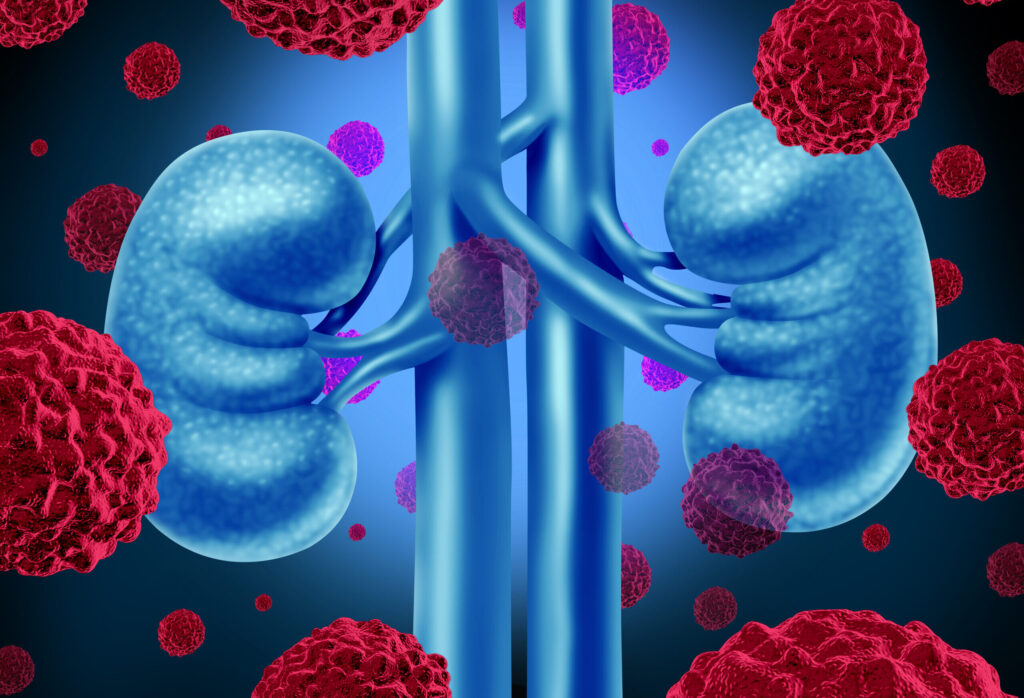Renal medullary carcinoma (RMC) is one of the most lethal kidney cancers, typically arising in individuals with sickle-cell trait. The tumor progresses rapidly, resists standard therapies, and often claims lives within a year of diagnosis. Despite its aggressiveness, molecular data on RMC have been scarce due to its rarity. In a new study published in Cell Reports Medicine, led by Pavlos Msaouel, MD, PhD, researchers sought to define the genomic and transcriptomic features of RMC using tumor samples from 25 patients—representing the largest cohort ever analyzed.
Through whole-exome and RNA sequencing, the team confirmed universal loss of SMARCB1, the hallmark mutation that drives this malignancy. They also identified frequent NF2 co-deletions, which activate the Hippo signaling pathway, and uncovered a distinctive tumor microenvironment characterized by fibrosis, neutrophil infiltration, and relative endothelial depletion. These molecular insights highlight RMC’s unique biology, which differs significantly from other renal cancers.
TROP2 emerges as a druggable vulnerability
One of the study’s most important findings was the high expression of TROP2 (TACSTD2), a transmembrane glycoprotein involved in cell adhesion and proliferation. TROP2 is already a validated therapeutic target in several epithelial cancers, including triple-negative breast and urothelial carcinoma, where the antibody–drug conjugate sacituzumab govitecan is approved. The MD Anderson–BostonGene collaboration found that nearly half of the RMC samples expressed TROP2 at levels comparable to these TROP2-driven tumors.
Molecular analysis revealed that RMC cells express high levels of topoisomerase I (TOP1)—the target of sacituzumab govitecan’s cytotoxic payload, SN-38—while lacking the major drug-efflux and detoxification mechanisms that often confer resistance. These data suggest a molecular landscape particularly suited for response to TROP2-directed ADC therapy.
Clinical activity in a small but meaningful cohort
To test this hypothesis, the team treated four heavily pretreated patients with sacituzumab govitecan. The results, though preliminary, were encouraging: one patient achieved a partial response lasting more than five months, while two others experienced stable disease with clinical improvement. The median progression-free survival across all four cases was 2.9 months—an important extension compared to the historical three-month survival benchmark for this population.
“Identifying TROP2 as a therapeutic target in renal medullary carcinoma marks a pivotal step toward precision treatment for one of the most aggressive and underserved cancers,” said Msaouel. “This discovery opens new possibilities for patients who currently have very limited options.”
New therapeutic avenues beyond TROP2
The comprehensive analysis also uncovered other potential therapeutic opportunities. Several additional surface proteins, including EPCAM, CLDN6, and CDH6, were highly expressed across tumors, suggesting that RMC may be amenable to other antibody-based or cell-directed approaches. The frequent activation of the Hippo signaling pathway, driven by NF2 loss, further supports exploration of pathway-specific inhibitors already in clinical development.
Beyond identifying targets, the study paints a detailed picture of RMC’s immune and stromal environment, offering clues to why immune checkpoint inhibitors alone have shown limited efficacy. Together, these molecular insights establish a foundation for precision-based trials designed around RMC’s unique vulnerabilities.
Looking ahead
Although limited by sample size, this study represents a turning point for a cancer that has historically lacked molecular definition. By identifying TROP2 as a clinically actionable biomarker and demonstrating early therapeutic activity of sacituzumab govitecan, the research provides both a rationale and a starting point for broader clinical testing.
As Msaouel and colleagues note, understanding RMC at the molecular level is critical to overcoming decades of therapeutic stagnation. Their findings bring the field one step closer to a precision-medicine framework for one of oncology’s most intractable diseases.

